Guaranteed Delivery
by Father’s Day
on orders placed through June 6
Guaranteed Delivery by Father’s Day
on orders placed through June 6
on orders placed through June 6
on orders placed through June 6
FREE Cherry Grilling Chips when you spend $200 (Use code GRILLING)
FREE 9″ Beech Bowl when you spend $150 (Use code SPRING)
FREE SHIPPING when you spend $100 (Continental US Only)
FREE Cherry Grilling Chips when you spend $200 (Use code GRILLING)
FREE 9″ Beech Bowl when you spend $150 (Use code SPRING)
FREE SHIPPING when you spend $100 (Continental US Only)
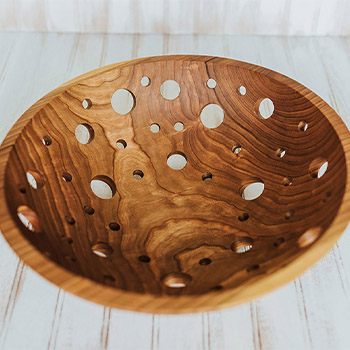
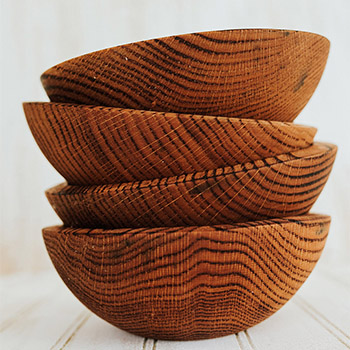
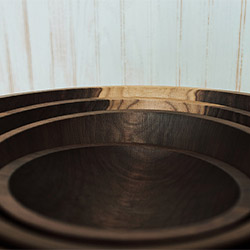
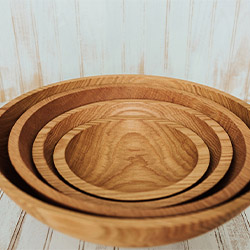
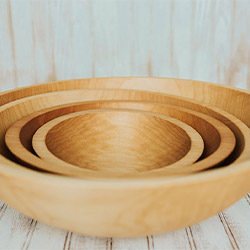
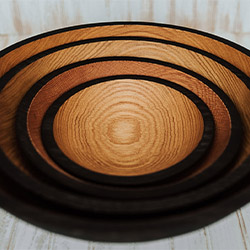
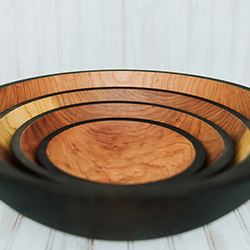
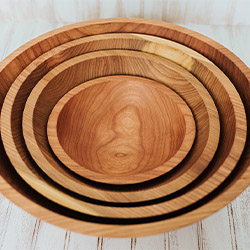
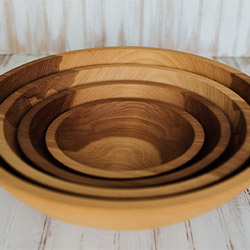
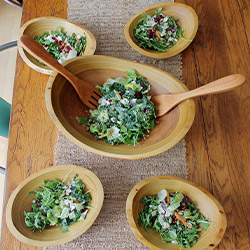

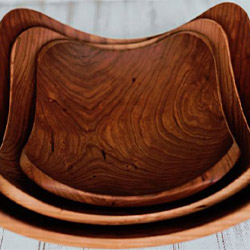
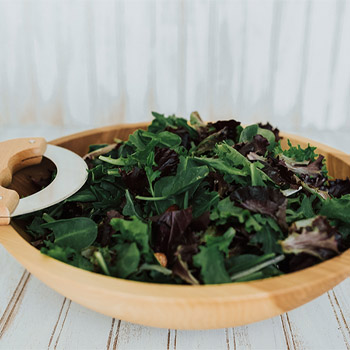

Share
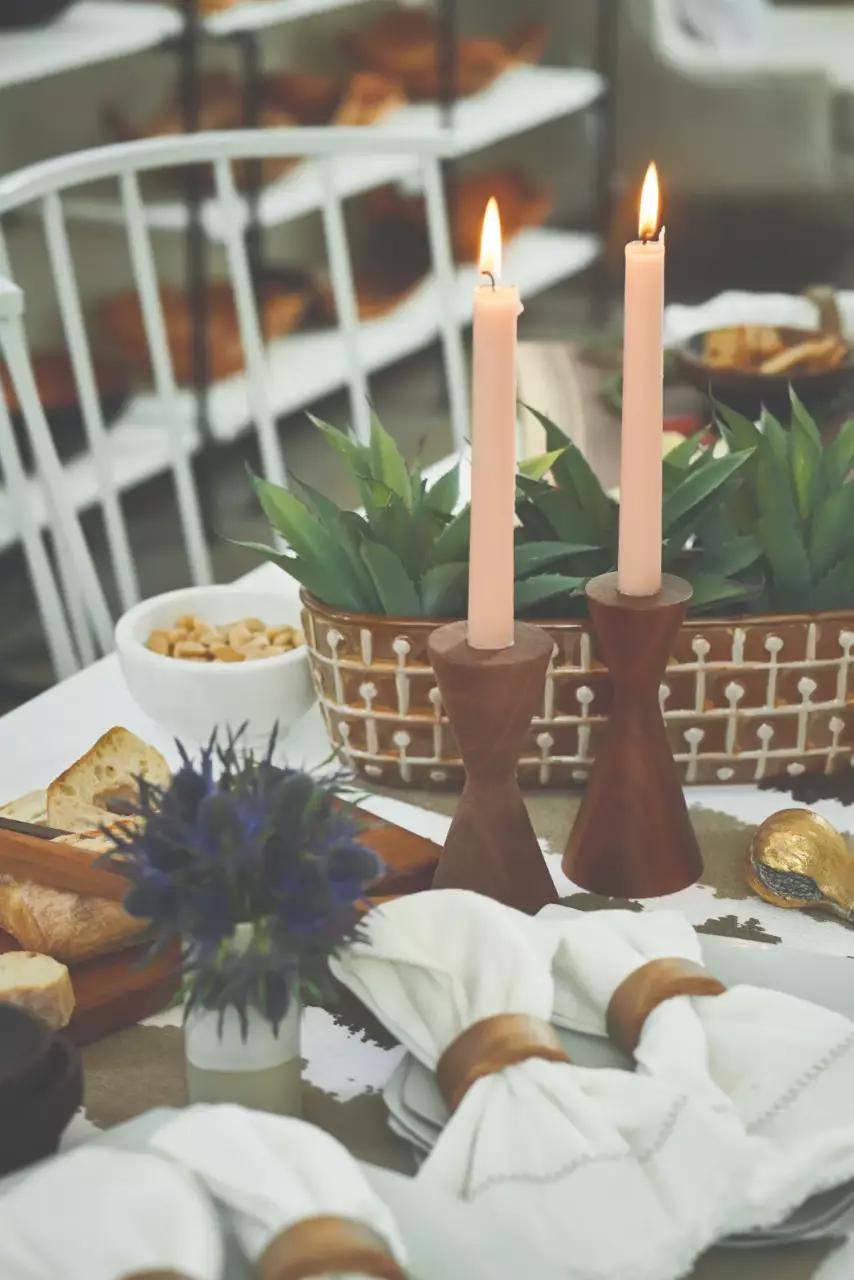
Did you know that wooden salad bowls have been a staple in kitchens for centuries, adding a touch of natural elegance to mealtime?
Whether you’ve recently acquired a new wooden salad bowl or have been using one for years, it’s important to understand how to properly care for and maintain it to ensure its longevity and beauty.
With expert tips and advice, you can keep your wooden salad bowl in top condition for years to come.
So, how exactly can you ensure your wooden salad bowl stays in pristine shape?
When selecting the right wood for your salad bowl, prioritize dense hardwoods such as maple, cherry, or walnut to ensure durability and longevity. These woods are less likely to absorb liquid or stain, making them ideal for food-related items. Additionally, they’re less prone to scratching and can withstand regular use.
Considerations for wood type are crucial in ensuring the longevity of your salad bowl. Maple is a popular choice due to its durability and light color, which makes it easy to spot any food residue and maintain cleanliness. Cherry, on the other hand, offers a rich, reddish hue that darkens over time, adding warmth to your table. Walnut, with its deep brown color, is known for its strength and resilience, making it an excellent choice for a long-lasting salad bowl.
When it comes to maintenance techniques, gentle hand washing with mild soap and warm water is recommended. Avoid soaking the wooden bowl or putting it in the dishwasher, as this can lead to warping or cracking. After washing, thoroughly dry the bowl with a clean cloth to prevent any potential damage.
For eco-friendly options, consider reclaimed or salvaged wood, which not only reduces environmental impact but also adds a unique, rustic charm to your salad bowl. Prioritizing durability factors and choosing the right wood for your salad bowl ensures that it will be a cherished part of your kitchen for years to come.
To ensure the longevity and quality of your wooden salad bowl, it’s essential to season it regularly with food-safe mineral oil or beeswax. Proper seasoning techniques offer numerous benefits, including maintaining the wood’s moisture content, preventing cracking, and enhancing its natural beauty.
Here’s how to season your wooden salad bowl correctly:
Common seasoning mistakes, such as using vegetable-based oils or over-saturating the wood, can lead to a sticky or rancid-smelling bowl. If you encounter these issues, try gently heating the bowl in the oven to help the oil penetrate the wood, or use a mixture of vinegar and water to remove any rancid odors.
Following these proper seasoning techniques and troubleshooting any common mistakes will ensure your wooden salad bowl remains a cherished kitchen staple for years to come.
For optimal maintenance and preservation, it is essential to exclusively hand wash your wooden salad bowl to prevent damage from harsh dishwasher detergents and high heat. By hand washing your bowl, you ensure that it retains its natural durability and beautiful appearance for years to come. When cleaning your wooden salad bowl, it’s crucial to consider material choices and cleaning techniques to maintain its effectiveness and longevity.
After hand washing your wooden salad bowl, carefully towel dry it immediately to prevent any moisture from lingering on the surface and causing damage over time. Proper air drying is essential to ensure your wooden salad bowl remains in top condition for years to come.
Here are some expert tips for drying your wooden salad bowl properly:
When it comes to your wooden salad bowls, extreme temperatures can have a significant impact on their condition. Proper storage considerations are essential to protect your bowls from temperature fluctuations.
Seasonal precautions, such as avoiding direct sunlight or storing in a cool, dry place, can help maintain the integrity of your wooden salad bowls.
To maintain the integrity of your wooden salad bowls, it’s essential to avoid exposing them to extreme temperatures, as rapid changes in temperature can lead to cracking or warping.
Here are some practical tips to help you protect your wooden salad bowls from temperature impact:
Consider storing your wooden salad bowls in a cool, dry place to prevent them from being exposed to extreme temperatures, which could lead to damage over time. Keep your bowls away from direct sunlight, radiators, and heating vents to avoid excessive heat exposure.
Moisture control is crucial, so avoid storing them in damp or humid areas, such as near sinks or dishwashers. To maintain the integrity of the wood, ensure adequate air circulation around the bowls by avoiding tightly enclosed spaces. Additionally, placing a breathable cover over the bowls can help regulate humidity levels while still allowing air to circulate.
Ensure your wooden salad bowls are shielded from extreme temperatures throughout the year to safeguard their longevity and natural allure. Seasonal changes can affect the condition of your wooden bowls, so take preventative measures to maintain them. Here’s how:
Regular oil application is essential to keep your wooden salad bowls in optimal condition, ensuring their longevity and maintaining their natural luster. When it comes to wood care, using the right oil application techniques is crucial for preserving the beauty and integrity of your wooden salad bowls.
To start, make sure your salad bowl is clean and completely dry before oiling. Choose a food-safe, neutral oil such as mineral oil or walnut oil. Avoid using vegetable or olive oil as they can become rancid over time and affect the taste of your salads.
Once you have the right oil, pour a small amount onto a clean, dry cloth or paper towel. Rub the oil into the wood, making sure to cover the entire surface, inside and out. Let the oil soak in for a few hours, or even overnight if possible, allowing the wood to absorb the oil and maintain its moisture content. After the oil has had time to penetrate the wood, wipe off any excess oil with a clean, dry cloth to prevent a greasy residue.
Repeat this process every 1-2 months or as needed, depending on usage and dryness of the wood. Regular oil application not only nourishes the wood but also creates a natural protective barrier against moisture and food stains.
This simple yet effective maintenance routine will help your wooden salad bowls stand the test of time, ensuring they remain a cherished part of your kitchen for years to come.
To effectively remove stains and odors from your wooden salad bowls, start by gently scrubbing the affected areas with a mixture of mild dish soap and warm water using a soft cloth or sponge. Here are some natural remedies and DIY solutions to help you restore your wooden salad bowls to their pristine condition:
These natural remedies and DIY solutions are gentle yet effective ways to tackle stains and odors in your wooden salad bowls.
To prevent your wooden salad bowls from cracking and warping, it’s important to control the humidity in your kitchen. Store your bowls in a cool, dry place to avoid exposure to extreme temperature and moisture changes.
Additionally, make sure to dry your bowls thoroughly after each use to maintain their shape and integrity.
Maintain the optimal humidity level for your wooden salad bowls by storing them in a cool, dry place away from direct sunlight and sources of heat. To prevent mold and control moisture levels, follow these practical tips:
Storing your wooden salad bowls in a cool, dry place away from direct sunlight and heat not only maintains the optimal humidity level but also sets the foundation for proper drying techniques to prevent cracking and warping.
After washing your wooden salad bowls, it’s crucial to ensure thorough drying to prevent damage. Air drying is a traditional and effective method; simply place the washed bowls on a drying rack in a well-ventilated area. This allows air to circulate around the bowls, preventing moisture buildup. Additionally, towel drying is a practical technique to remove excess water.
After air drying, use a clean, dry towel to gently pat the bowls until they’re completely dry. By incorporating these proper drying techniques into your routine, you can safeguard your wooden salad bowls from cracking and warping, ensuring their longevity and continued functionality.
Use wooden utensils when tossing and serving salads in your wooden salad bowl to prevent scratching and maintain the bowl’s finish. Wooden utensils are gentle on the bowl’s surface and reduce the risk of damage, ensuring its longevity.
Here are some care instructions and maintenance tips for using wooden utensils with your wooden salad bowl:
When preserving the quality of your wooden utensils, it’s essential to ensure their proper storage to prevent damage and prolong their lifespan. Proper cleaning and longevity tips can only go so far if the storage of your wooden salad bowls is not carefully considered. Here are some practical and traditional techniques to help you store your wooden salad bowls safely.
| Storage Tip | Description | Benefits |
|---|---|---|
| Keep in a Cool, Dry Place | Store your wooden salad bowls in a cool, dry place away from direct heat sources and sunlight to prevent warping and cracking. | Preserve the natural moisture content of the wood, preventing it from drying out. |
| Use a Dust Cover | Cover your wooden salad bowls with a breathable cloth or a specifically designed cover to protect them from dust and debris when not in use. | Reduces the need for frequent cleaning and maintenance, keeping the bowls ready for use. |
| Avoid Stacking | Do not stack your wooden salad bowls on top of each other to prevent unnecessary pressure and potential scratches or dents. | Maintains the original shape and finish of the bowls, extending their lifespan. |
| Allow for Air Circulation | Store the bowls in a way that allows for proper air circulation to prevent moisture build-up, which can lead to mold and mildew formation. | Ensures the bowls remain dry and free from damaging mold or mildew. |
| Regularly Check the Storage | Periodically check the storage area for any signs of pests, moisture, or other environmental factors that could potentially harm the wooden salad bowls. | Helps in the early detection and prevention of any storage-related issues. |
To maintain the quality of your wooden salad bowls over time, regularly inspecting and addressing any signs of wear and tear is crucial for preserving their longevity and functionality. By following a simple maintenance schedule, you can ensure that your wooden bowls remain in top condition for years to come.
Here are some expert tips for periodic maintenance:
Following these simple maintenance steps will help you keep your wooden salad bowls in excellent condition, ensuring that they remain both functional and aesthetically pleasing for many years.
Now that you have learned these expert tips for maintaining your wooden salad bowls, you can enjoy their natural beauty and durability for years to come.
By choosing the right wood, seasoning the bowl, hand washing, and following these practical techniques, you can ensure that your salad bowls stay in great condition.
Remember to give them periodic maintenance and store them carefully to prevent cracking and warping.
With proper care, your wooden salad bowls will be a timeless addition to your kitchen.
All Holland Bowl Mill bowls come with a lifetime guarantee. If your bowl ever cracks or warps from regular use, Holland Bowl Mill will replace it with a new one of similar size and finish. Never let water stand in a wood bowl for a long period of time and never clean wood bowls or any wood product in the dishwasher. Holland Bowl Mill recommends using water and a small amount of mild soap to clean your wood products, then hand dry.
No appointment needed if group is under 10.
For larger groups, call 616-396-6513 to schedule your tour.
© 2023 Holland Bowl Mill